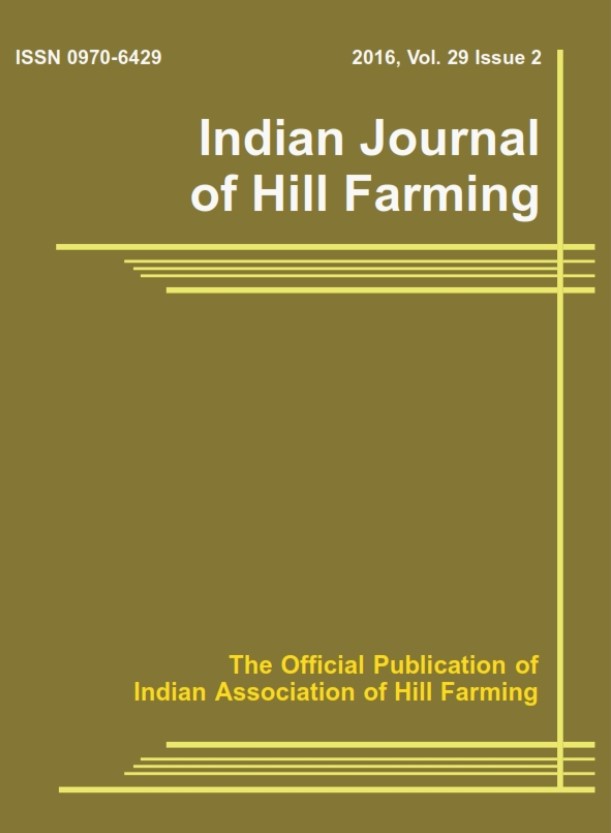Harmonizing Nutrient Synergy Maximizing Gladiolus Growth and Yield in Hill Terrain through Integrated Nutrient Management
DOI:
https://doi.org/10.56678/Keywords:
Effective micro-organisms, Gladiolus, Indigenous, Jeevamrutha, OrganicAbstract
In the 2021-22 agricultural season, the Horticulture Department's Research farm in NU:SAS conducted a study to assess the impact of various organic liquid fertilizers, including Effective Micro-organisms (EM), Indigenous Effective Micro-organisms (IEM), and Jeevamrutha, on gladiolus (Gladiolus grandiflorus L.) growth in a hilly region. Employing a Randomized Block Design (RBD) with 8 treatments, Treatment T3, which involved 500 ml of activated IEM per square meter, produced the most impressive results. This treatment resulted in the longest spike length (89.62 cm), the highest number of florets per spike (10.47), and the greatest number of corms per plant (1.76). EM significantly reduced critical growth stage durations, such as sprouting (6.83 days), spike initiation (68.48 days), first floret opening (74.24 days), and spike harvesting (7.91 days). Treatment T6, combining 50% recommended dose of fertilizer (RDF) with 50% IEM, yielded the tallest plant height (108.09 cm), extended shelf life (9.35 days), and prolonged vase life in distilled water (11.17 days). Regarding nutrient content, Treatment T2 (EM) had the highest nitrogen content in leaves (4.33%), while Treatment T3 (IEM) showed the highest phosphorus content (0.011%). In corms, RDF had the highest nitrogen content (3.08%), and Treatment T3 (IEM) had the highest phosphorus content (0.016%). Treatment T2 (EM) had the highest post-harvest soil nutrient availability, with N (961.71 kg ha-1), P (61.96 kg ha-1), and K (516.50 kg ha-1). Additionally, Treatment T5, combining 50% RDF and 50% EM, recorded the highest organic carbon content (2.81%) in the hilly region. Treatment T3 (IEM) showed the most favourable benefit-cost ratio (1:2.46) and the highest net income (₹676,653/ha), highlighting its economic viability and potential for sustainable floriculture management in hilly regions. This study demonstrates the significant impact of organic liquid fertilizers on gladiolus growth, flowering, corm production, soil fertility, and nutrient dynamics in hilly regions.
Published
Issue
Section
License

This work is licensed under a Creative Commons Attribution-NonCommercial-NoDerivatives 4.0 International License.




